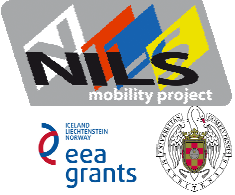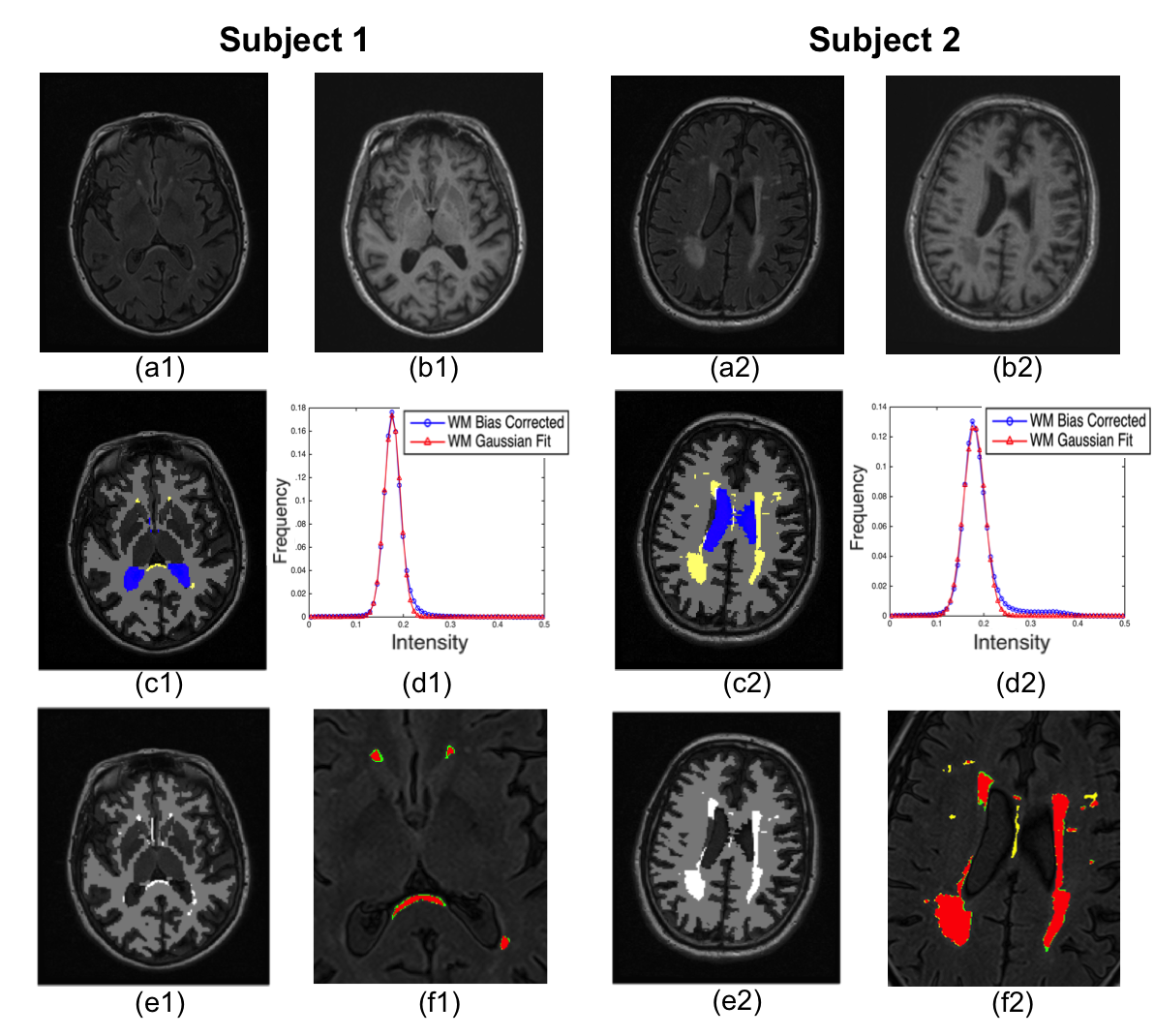


Improved automatic segmentation of white matter hyperintensities in MRI based on multilevel lesion features
M. Rincón1*, E. Díaz-López1, P. Selnes2, K. Vegge3, M. Altmann2, T. Fladby2 and A. Bjørnerud4,5
2 Department of Neurology, Akershus University Hospital, Oslo, Norway
3 Department of Radiology, Akershus University Hospital, Oslo, Norway
4 The Intervention Centre, Oslo University Hospital, Oslo, Norway
5 Department of Physics, University of Oslo, Oslo, Norway
* Corresponding author: mrincon@dia.uned.es

Abstract
Brain white matter hyperintensities (WMHs) are linked to increased risk of cerebrovascular and neurodegenerative diseases among the elderly. Consequently, detection and characterization of WMHs are of significant clinical importance. We propose a novel approach for WMH segmentation from multi-contrast MRI where both voxel-based and lesion-based information are used to improve overall performance in both volume-oriented and object-oriented metrics. Our segmentation method (AMOS-2D) consists of four stages following a "generate-and-test" approach: pre-processing, Gaussian white matter (WM) modelling, hierarchical multi-threshold WMH segmentation and object-based WMH filtering using support vector machines. Data from 28 subjects was used in this study covering a wide range of lesion loads. Volumetric T1-weighted images and 2D fluid attenuated inversion recovery (FLAIR) images were used as basis for the WM model and lesion masks defined manually in each subject by experts were used for training and evaluating the proposed method. The method obtained an average agreement (in terms of the Dice similarity coefficient, DSC) with experts equivalent to inter-expert agreement both in terms of WMH number (DSC=0.637 vs. 0.651) and volume (DSC=0.743 vs. 0.781). It allowed higher accuracy in detecting WMH compared to alternative methods tested and was further found to be insensitive to WMH lesion burden. Good agreement with expert annotations combined with stable performance largely independent of lesion burden suggests that AMOS-2D will be a valuable tool for fully automated WMH segmentation in patients with cerebrovascular and neurodegenerative pathologies. Index Terms: white matter lesions, white matter hyperintensities, amorphous object segmentation, object-oriented analysis, similarity index, WM modelling, automated WMH detection.
Information Sharing Statement
MR scans of the study were obtained from a Siemens Espree 1.5 T system (Siemens Healthcare, Erlangen, Germany). All 28 subjects gave their written consent, and the Regional Committee for Medical and Health Research Ethic South-East evaluated (based on the Norwegian Health and Research Act and the Helsinki Declaration of 1964; revised 2013) and approved the study. The anonymised MR datasets and ground truth segmentations of white-matter hyperintensities (WMH) will be made publicly available in raw raster format on our website http://simda.uned.es/proyects.html.
Dataset description
A total of 28 subjects were included in the analysis. Of these, 13 subjects were included from a brain infarct study and 15 subjects from an ongoing mild cognitive impairment study [Selnes et al., 2015]. Inclusion from the two different patient cohorts provided samples with a large variety in WMH load.
Stroke patients were recruited from a university-hospital based stroke unit. Inclusion criteria for these patients were: cortical and lacunar ischemic infarctions, between 40 and 79 years of age, and Mini–mental state examination (MMSE) score ≥23, no severe problems of language and visual/auditory neglect. Exclusion criteria were a history of somatic or psychiatric disorder including depression. Patients with MCI were recruited from a university-hospital based memory clinic. The inclusion procedure adhere to the Petersen criteria and was extensively documented elsewhere [Selnes et al., 2013]. All subjects gave their written consent, and the Regional Committee for Medical and Health Research Ethic South-East evaluated (based on the Norwegian Health and Research Act and the Helsinki Declaration of 1964; revised 2013) and approved the study. All further study conduct was based on and in line with these guidelines.
MR scans were obtained from a Siemens Espree 1.5 T system (Siemens Healthcare, Erlangen, Germany), and the dataset for the WMH analysis included one T1-weighted magnetization prepared rapid gradient echo (MPRAGE) 3D sequence (TR/TE/TI/FA = 2400/3.65/1000/8°, matrix = 240×192), 160 sagittal slices, thickness=1.2mm, in-plane resolution of 1mm×1.2mm and one 2D axial FLAIR sequence (TR/TE/TI=13420/121/2500), 36 slices, slice thickness 3 mm, spacing between slices 3.9 mm and in-plane resolution of 0.45mm×0.45mm. Three experts with extensive training in WMH diagnostics manually segmented WMHs from the FLAIR images and the "majority vote" rule (agreement of at least two out of three experts) was used to define the gold standard (GS) reference WMH volumes. Infarcted regions also appear as hyperintensities in the FLAIR images, and were consequently manually excluded from further analysis. Automated segmentation of infarct regions was not attempted due to insufficient number of datasets for building a model.
Shared material
Original MRI images:
Expert's annotations:
Preprocessing results:
Brain labels resampled to FLAIR
Segmentation results:
AMOS-2D stage 1: multithreshold segmentation
AMOS-2D stage 2: object-based filtering (final segmentation)
Citation: If you use this dataset in your research, please cite this publication:
Rincón M, Díaz-López E, Selnes P, Vegge K, Altmann M, Fladby T, Bjørnerud A. Improved Automatic Segmentation of White Matter Hyperintensities in MRI Based on Multilevel Lesion Features. Neuroinformatics. 2017 Apr 4. doi:10.1007/s12021-017-9328-y [Epub ahead of print].
(c) UNED - Updated 14/06/2017